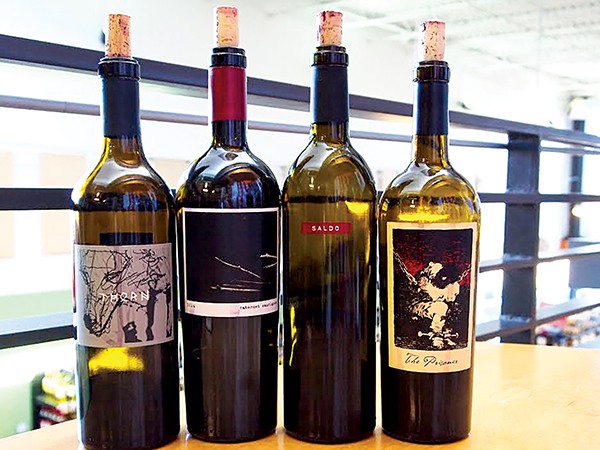Man, sometimes things just break right for a guy. It was one of those beautiful winter days masquerading as spring when I dropped in on Brian Herrera over at Kirby Wines and Liquors. I’d meant to pester him about something else entirely when I stumbled into a small tasting of the flagship label and three new wines from The Prisoner Wine Co. of Northern California. Then I promptly forgot what it was I’d meant to ask him.
Back in 2003, David Phinney put his vast knowledge of the Italian-American winemaking tradition and his contacts in the community to use to produce the first vintage of his now famous blended red — The Prisoner. It’s primarily a zinfandel, but they don’t like to call it that. It’s a red table wine that sticks to its powerful profile — the make-up changes every vintage in light of harvest conditions. The endgame here wasn’t to produce a devoted varietal wine, but to recreate the flavors of what the original Italian settlers of Napa Valley called “mixed blacks.” Or what we would call a “blended red.”
This is not, however, the point where I describe Phinney taking a Zen-like walk around his old-growth vineyards. First of all, Kirby Wines is over on Quince, and second, while I’ve never met the man, Phinney’s not a grower. The Prisoner Wine Co. works with vineyards across Northern California to source their grapes. This gives the company the freedom to make a vintage as its winemakers see fit. Whatever it is they envision, it seems to work.

The Prisoner breaks free.
Regular readers know that I’m not afraid of some vin ordinaire, but that’s not what these wines are. The Prisoner retails at $46.99, so it isn’t a Tuesday night vino, but you don’t have to wait for an anniversary either. John Caradonna of West Tennessee Crown (who was doing the pouring) told me that it was a big flavor, but “structured.” Given my dislike of wine-speak, it pains me to say that he’s pretty much hit the nail on the head.
The other booming expression is The Prisoner’s cabernet sauvignon — Cuttings ($49.99). It was the biggest of the lot — I mean it really comes at you. That having been said, it stops well short of the point where so many of these big numbers begin to taste like an alcoholic Smucker’s grape jelly.
A little down the price scale at $29.99 is the Saldo. For those of you who haven’t been through 12 years of Catholic schooling, that’s a Latin term meaning “from here and there,” which is a fair description of how the grapes are sourced: mostly zinfandel blended with syrah and petite shirah.
If this all sounds random, it’s anything but. The PWC deliberately gravitated to using the oldest vines, mostly in Sonoma and Mendocino counties, because of the distinct soil. This California dirt isn’t like the deep Delta loam we’ve got around here; it’s rocky, dry ground. These are grapes that really have to work for growth, creating a concentration of flavors and colors. Honestly, the Italian immigrants were close to the mark calling these wines “mixed blacks.” In the end, though, the Saldo certainly doesn’t taste cheaper; it’s a big fruity wine with some pepper in it.
While the Saldo was probably my favorite, the big surprise for me was a wine called Thorn — a merlot. I’ve never been an unqualified fan of that varietal, for the simple reason that I haven’t found many that were particularly interesting. This one is, with an intense flavor I don’t normally associate with merlot. The trick is achieved, partly, through using those older vines.
“It’s the cabernet lover’s merlot,” said Caradonna.
Which probably explains why I liked it so much.